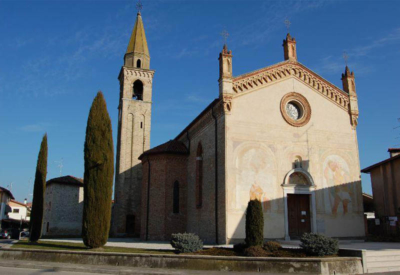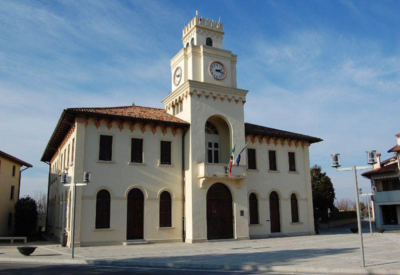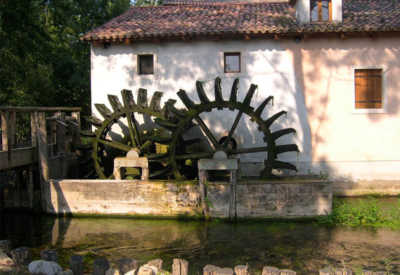GRUARO
The name Gruaro may be derived from ‘cranes’ (GRUS in Latin with the suffix -ARIUS meaning a group), while others attribute it to the Cimbric word gruarius, referring to a figure that is the guardian of the forest. Recent archaeological findings point to there already being a settlement in the Concordia area in Roman times. The first records of village life date back to 838, when Emperor Lothair granted several territories to the Benedictine Abbey of Sesto al Reghena. The monks are credited with creating the settlement and fortifying it by building a castle. In 1140, the concession of Bishop Gervino was drawn up, which is thought to mark the birth of the town.
During its domination by Venice, the area was incorporated into the Republic of St Mark and then began to decline into a mere farming town. It only entered a new era under the Napoleonic kingdom of Italy, becoming a municipality of the dipartimento of Passariano (today Pordenone and Udine). As part of the Kingdom of Lombardy-Venetia, it was transferred to the province of Venice. A sarcophagus from the 4th century C.E. has recently been discovered there.
Worth Visiting
The parish church, dating back to the 15th century is now dedicated to San Giusto (Saint Just). The façade is decorated with two large 16th-century frescoes depicting Saint Christopher and the Patron Saint.
Church of San Tommaso Apostolo (1463). The church has a fine lunette and frescoes. The chapel of Santa Elisabetta and the church of Sant’Angelo belong to the same period.
Church of San Giovanni.
Villa Fadelli-Ronzani, dating back to the 18th century, is a fine example of a country manor house.
Don’t Miss
In Stalis, you can see the recently restored mills mentioned in the book “Le confessioni d’un italiano’” (Confessions of an Italian) by Ippolito Nievo.



